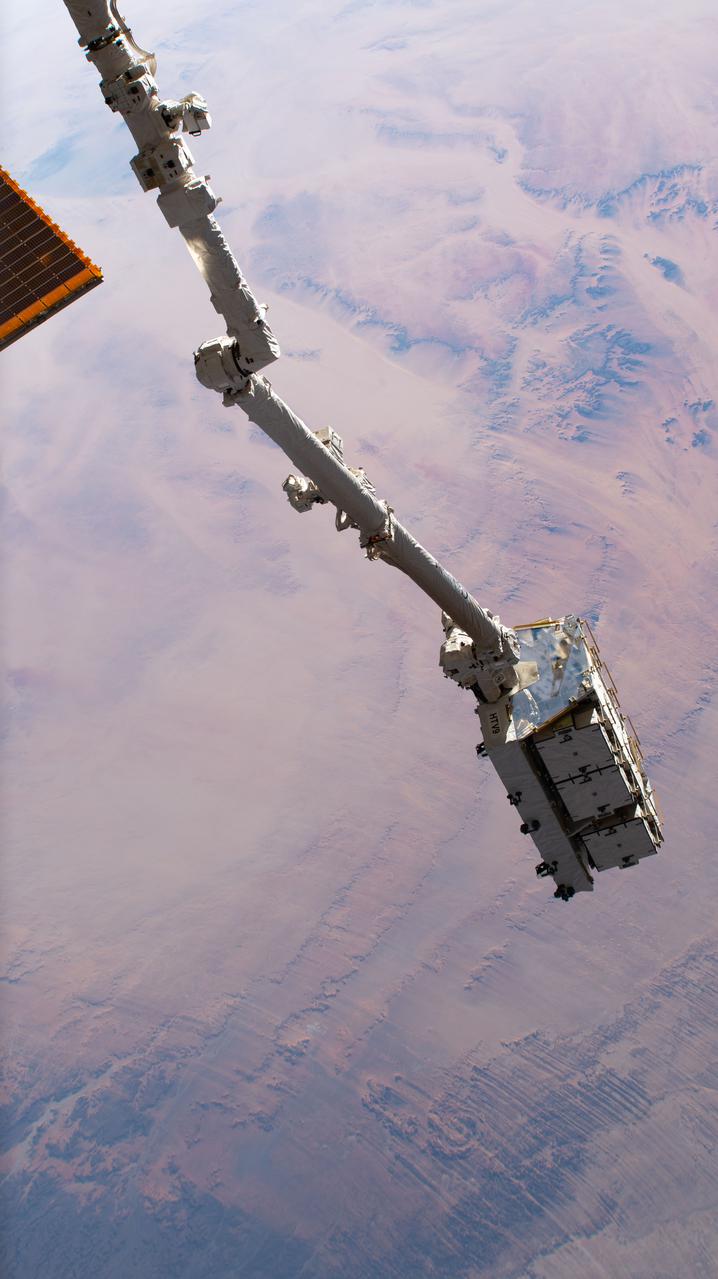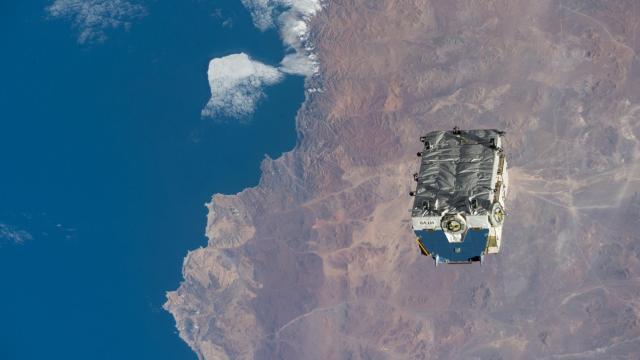Weighing 2.6 tonnes and travelling 8 km per second, this heap of old batteries is now the heaviest single piece of garbage to be jettisoned from the International Space Station.
The pallet is packed with nickel-hydrogen batteries, and it will stay in low Earth orbit for the next two to four years “before burning up harmlessly in the atmosphere,” according to a NASA statement. SpaceFlightNow reports that the pallet is the “most massive object ever jettisoned from the orbiting outpost.”
NASA spokesperson Leah Cheshier confirmed this as being the case.
“The External Pallet was the largest object — mass-wise — ever jettisoned from the International Space Station at 2.6 tonnes, more than twice the mass of the Early Ammonia Servicing System tank jettisoned by spacewalker Clay Anderson during the STS-118 mission in 2007,” wrote Cheshier in an email.
NASA’s ballistics officers “indicate no threat” of the pallet smashing into other space objects, but “this item, like all, will be tracked by U.S. Space Command,” she added.
[referenced id=”1132528″ url=”https://gizmodo.com.au/2018/10/soyuz-space-crew-makes-emergency-landing-after-terrifying-booster-failure/” thumb=”https://gizmodo.com.au/wp-content/uploads/2018/10/11/rsiluqxxqcr3kdljde9u-300×168.gif” title=”Soyuz Space Crew Makes Emergency Landing After Terrifying Booster Failure ” excerpt=”The two-person crew aboard a Russian-made Soyuz rocket made an emergency landing in Kazakhstan yesterday shortly after launch. The crew, which was travelling to the International Space Station, is reportedly safe and in “good condition” after the scary failure was broadcast on the web.”]
It wasn’t the original plan for the pallet to be discarded like this. The failed launch of a Soyuz rocket in 2018, in which NASA astronaut Nick Hague and Roscosmos cosmonaut Alexey Ovchinin were forced to make an emergency landing in the Kazakh steppe, caused a disruption to the spacewalking schedule, leading to the leftover pallet.

NASA’s spacewalk on February 1, 2021, involving astronauts Mike Hopkins and Victor Glover, was notable in that it concluded a four-year effort to upgrade the space station’s batteries. These batteries store energy collected by solar arrays, but in 2011 NASA decided to make the switch from nickel-hydrogen batteries to lithium-ion batteries. Production of these batteries started in 2014, and the process of swapping them out began in 2016.
This effort required four supply missions from the Japanese H-II Transfer Vehicle (HTV) cargo spacecraft, 13 different astronauts, and 14 spacewalks, in which 48 nickel-hydrogen batteries were replaced by 24 lithium-ion batteries.
Normally, the old batteries would be placed inside an HTV and jettisoned from the ISS, and the items would mostly burn up on re-entry. But the Soyuz launch failure disrupted the pattern of spacewalks and the intended schedule such that, in late 2018, an HTV cargo freighter left the station without a battery pallet, according to SpaceFlightNow. The battery-replacement mission continued, and HTVs continued to depart the station with pallets, but now with an extra one perpetually attached to the station. With the mission done and no more HTVs coming (at least none of the old design — they’re being replaced by the HTV-X cargo spacecraft), mission planners had to jettison the pallet on its own.
So that’s what they did on Thursday March 11, when mission controllers in Houston used the Canadarm2 robotic arm to “release an external pallet loaded with old nickel-hydrogen batteries into Earth orbit,” according to NASA. The object was released approximately 427 km above Earth’s surface.
According to the European Space Agency, around 34,000 objects larger than 10 cm are currently in orbit around Earth, in addition to millions of tinier objects, such as tools and bits of spacecraft. The volume of objects in space, both functional and non-functional, is steadily increasing, prompting concerns of potential collisions and even more orbital debris.
